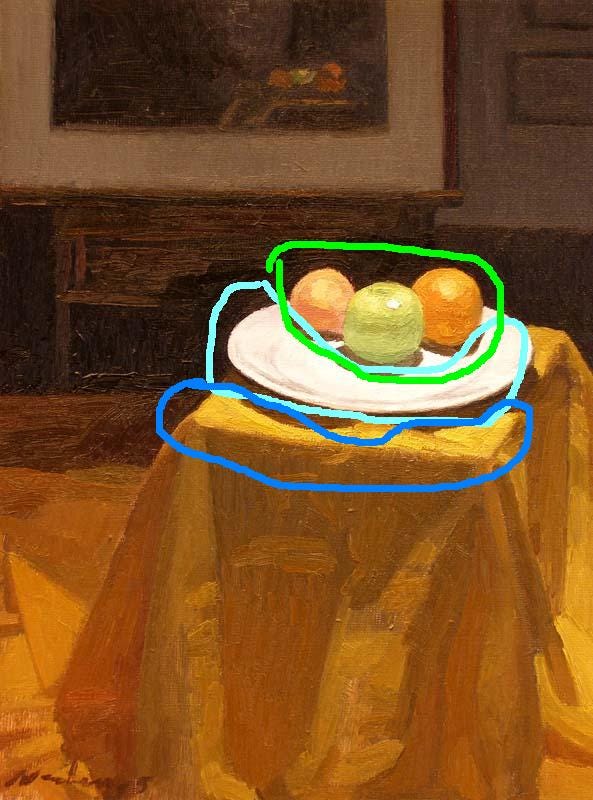Triangulation of Light and Dark
Some months ago I had an aesthetic breakthrough--I discovered the tremendous value of the triangulation light and dark. It has sped my realistic technique, intensified eye movement, and allowed for more subtlety than I could have imagined.
To create the feeling of light, it is important to have a hierarchy of lights and darks. If you have several lights and darks of equal value spread over a canvas, you will surely kill off any life and excitement in your work. The problem is that it is very difficult to keep track of all the subtle shifts in tone. On the opposite side, you can be so subtle and afraid to paint powerfully that you end up with a dull mess. One answer, for me, is this triangulation of light and dark.
The idea is to be clear what your bright, brighter, and brightest areas are. Hence, triangulation: you compare the three brightest simultaneously. The white plate is the brightest, the tops of the fruits next and then the front corners of the yellow cloth.
It is crucial not to have any other competition with those bright areas or you lose the effect.
Finally with the darks I did a similar comparison--finding my dark, darker, and darkest areas. Here the darkest is the area directly behind the plate and fruit. It's as black ivory as I could make. Next is an area in the framed art piece on the easel, followed by the shadow under the plate. Again it is important that the 4th, 5th, etc. dark areas become simply neutral darks, not getting close enough in tone to compete against your darkest areas.
Do try it out on some of your works I believe you will see immediate rewarding results.
Michael Newberry




